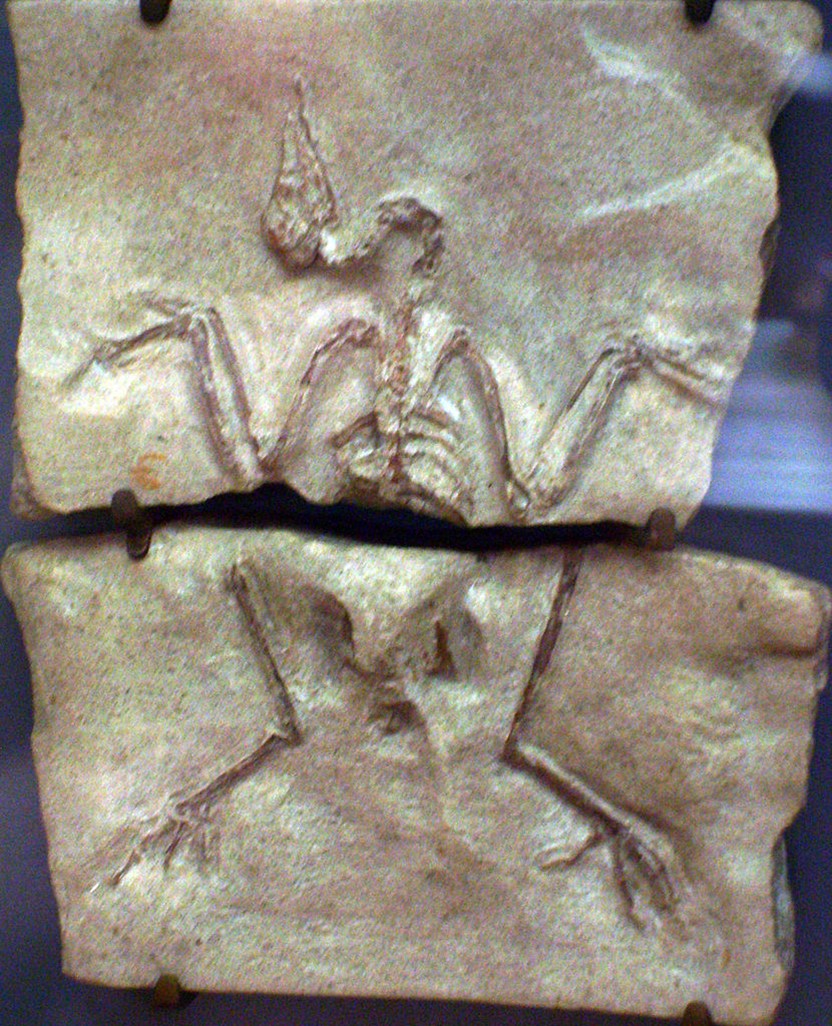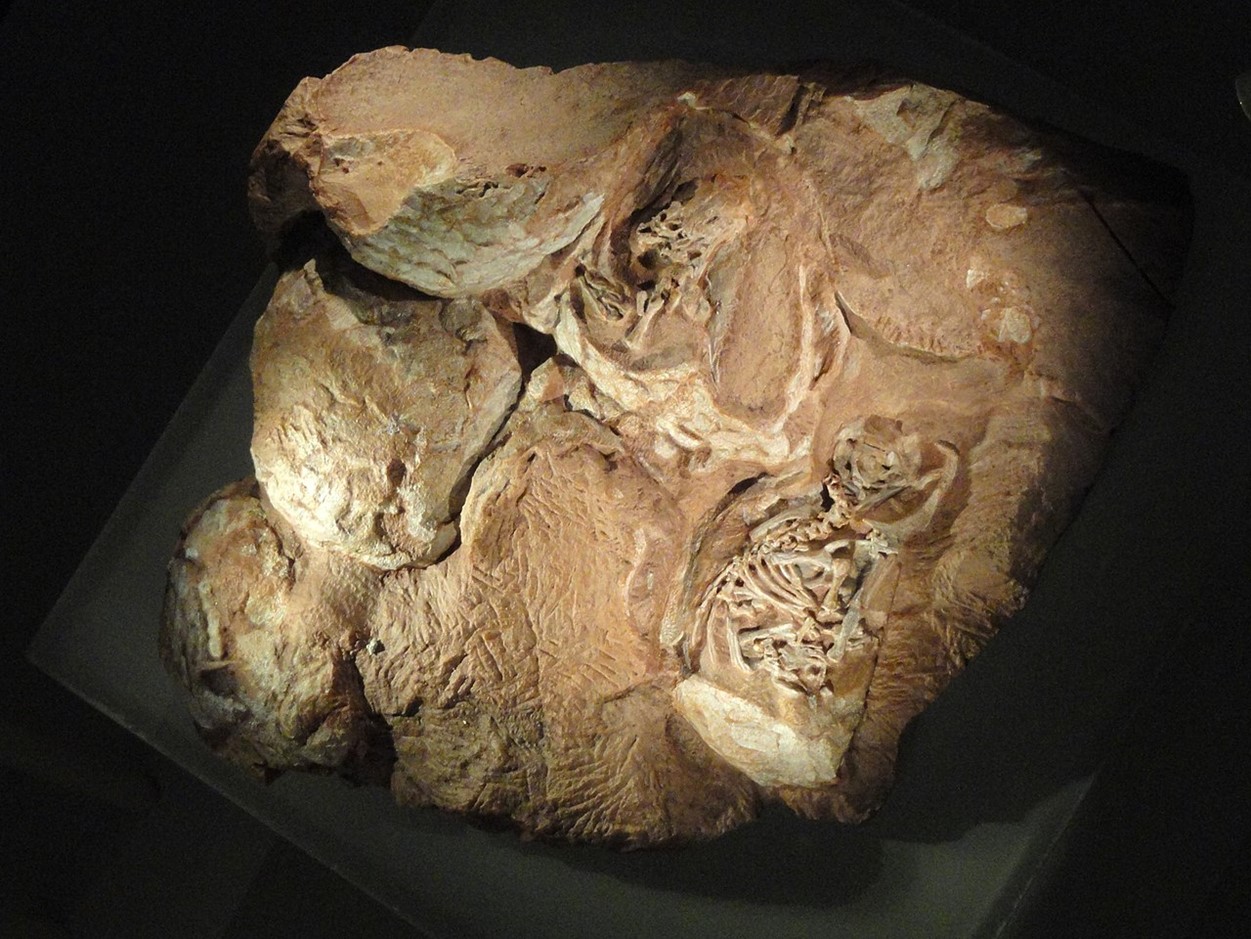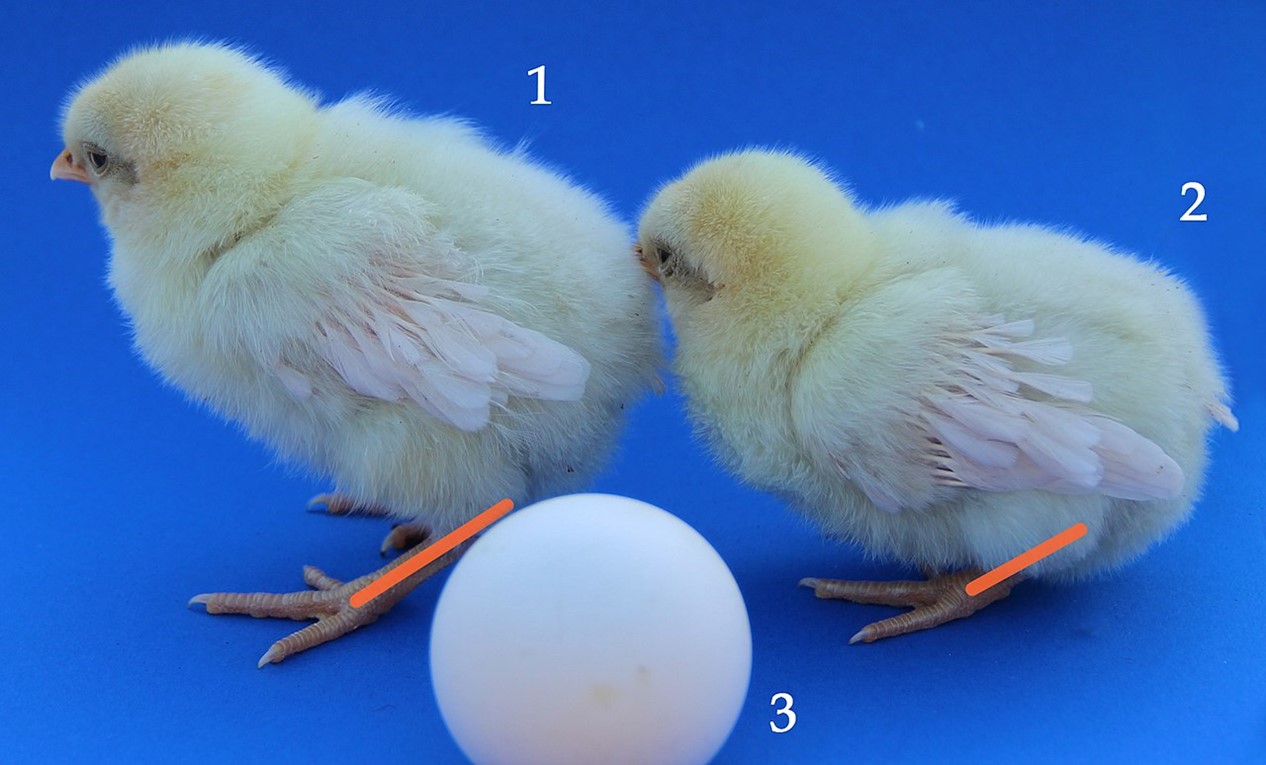
Credit: FunkMonk, via Wikimedia Commons
Around 300 million years ago, something magnificent happened: evolution hatched the egg.
Specifically, the shelled egg. Most eggs then, and many still today, were gelatinous and could only survive in water. Like those of frogs or fish.
But the shelled egg that could contain water and nutrients and be viable on land allowed some species to move out of the water and populate the land.
Early shelled eggs were leathery, pliable and soft, like those still found in turtle and crocodile species. These rarely survive in the fossil record.
Later, eggs developed hard shells that preserve somewhat better—though not well, since their calcium compounds dissolve in acidic soils.
Still, enough were preserved for us to know that the first hard-shelled eggs came around 200 million years ago, at first for dinosaurs, then for birds, and more recently on breakfast tables.
That’s because with all their benefits, eggs had a weakness: they’re a nutrient package just waiting for a hungry predator. Some nutritionists call them the perfect food.
So most mammals developed the capacity for live birth to protect offspring longer. Even some reptiles are developing this capacity today.
If all this egg talk has you pondering the old question, Which came first, the chicken or the egg? ... the paleontologist would answer that the chicken-type egg preceded the very first chicken-like bird by 130 million years.
Background
Synopsis: Which came first, the chicken or the egg? Eggs come from chickens, but chickens come from eggs. This paradox is both scientific and philosophical. Evolutionary biologists can answer it from a literal standpoint, but as a metaphor for tracing the origin of self-perpetuating cycles, it generally describes an exercise in futility.
- From a biological perspective, we can look at the paradox two ways:
- Which came first, the egg in general or the chicken?
- Which came first, the domesticated chicken or the domesticated chicken's egg?
- The earliest fossil record of eggs can be traced back more than 300 million years, when a critical evolutionary step occurred as some vertebrates called amniotes evolved to lay eggs, freeing them to inhabit dry land.
- Amniotes include reptiles, birds and mammals that diverged from other tetrapods like amphibians and fish around 325 million to 312 million years ago, in the Carboniferous geological period.
- Amniotes have the advantage that, because of the adaptation of the amnion and other membranes, they can lay their eggs on dry land or incubate them within the mother.

Wood frog egg mass at Assabet River National Wildlife Refuge, Massachusetts. In contrast to amniotes like birds and reptiles, amphibians and fish are anamniotes (no amnion) and must spawn in or near water to keep their gelatinous eggs moist. Additionally, anamniote eggs hatch into larvae, but amniotes do not have a larval stage.
Credit: U.S. Fish and Wildlife Service, Northeast Region; public domain, via Wikimedia Commons - These amniotic membranes and the fluids contained within them shield the amniote embryo from fluctuations in the environment that could be fatal for anamniotes.
- While early shells were supple and leathery, the further adaptation of hard shells enabled amniotic animals to live even farther from water and to increase in size.
- Eggshells are hard to preserve for two reasons: early eggshells were very thin, and eggshells tend to dissolve in acidic soils. The earliest egg fossils come from Early Jurassic dinosaur nests found in South Africa. They are nearly 200 million years old.

At 195 million years old, this clutch of seven Massospondylus eggs are the earliest known in the fossil record. They were found in 1976 in Golden Gate Highlands National Park, South Africa. The fossil embryos of this long-necked Early Jurassic sauropod herbivore are 6 inches (15 cm) long and would grow to 13 to 26 ft (4–8 m) as adults.
Credit: Daderot, CC0, via Wikimedia Commons
- The first fossils of true birds appeared sometime between 165 million and 150 million years ago, in the Jurassic Period.
- A fossil of the earliest direct ancestor of the chicken and the duck was found in 66.7-million-year-old rocks (latest Cretaceous) in Belgium and was named Asteriornis maastrichtensis. This specimen is also known as “wonderchicken,” the oldest known modern bird fossil.
- The heavy-bodied, ground-feeding birds that were the ancestors of turkeys and chickens appear in the fossil record 45 million years ago, in the mid-Eocene Epoch.
CASE CLOSED: Dinosaur egg fossils are more than 150 million years older than the birds that would become chickens; therefore, the egg clearly came before the chicken, right?
- Not so fast! What if you ask the question, Which came first, the chicken’s egg or the chicken?
- The bird that would become the domesticated chicken diverged from an ancestor called the red jungle fowl about 8,000 years ago. Fossils indicate it was domesticated in China soon thereafter.
- As wild chickens gradually evolved from their ancestors over millions of years, there must have been a moment when a bird that was not quite a chicken laid an egg containing a mutated embryo that hatched into the first chicken.
- The mutant hatchling from the not-quite-chicken’s egg represented a new species.
- When the mutant reached adulthood and laid eggs of its own, these were the first chicken’s eggs.
- So, following this line of thought with “chicken’s” as a possessive adjective, for the chicken’s egg to be a possession of the chicken, the chicken had to have existed before it laid the first “chicken’s” egg.

With this Italian chicken mama watching her egg hatch, it is not difficult to determine which of these two came first.
Credit: Pava, via Wikimedia Commons
CASE CLOSED? The mutant offspring of the not-quite-chicken that was the first chicken laid the first chicken’s egg, so the chicken must have been around before the chicken’s egg.
- Or not! What if you consider the egg of the not-quite-chicken that contained the mutant to be the first chicken-containing egg.
- So “chicken” is a descriptive adjective that describes the contents of the egg.
- In this case, the “chicken” egg contained the chicken, so it had to precede the chicken.

In this photo, the egg that is about to hatch is around before the chick inside it.
Credit: Opzwartbeek, via Wikimedia Commons
CASE REOPENED: The chicken-containing egg predates the chicken hatchling.
- Once again, the frustrating cyclical reasoning comes down to semantics.
- As a philosophical metaphor for trying to establish the source of self-perpetuating cycles, the chicken and egg paradox can be futile, depending on how you phrase it … and punctuate it!
- In the future, chicken bones may be the signature fossil of our time, as an estimated 23 billion domesticated chickens exist on Earth at any given time with the sole purpose of feeding humanity—those bones must be piling up!
- A note of interest: Of all the amniotes, mammals eventually developed the capability of live birth (viviparity), while reptiles and birds continued to lay shelled eggs.
- However, some reptilian species have started to evolve to produce live offspring, protecting them from predators longer.

